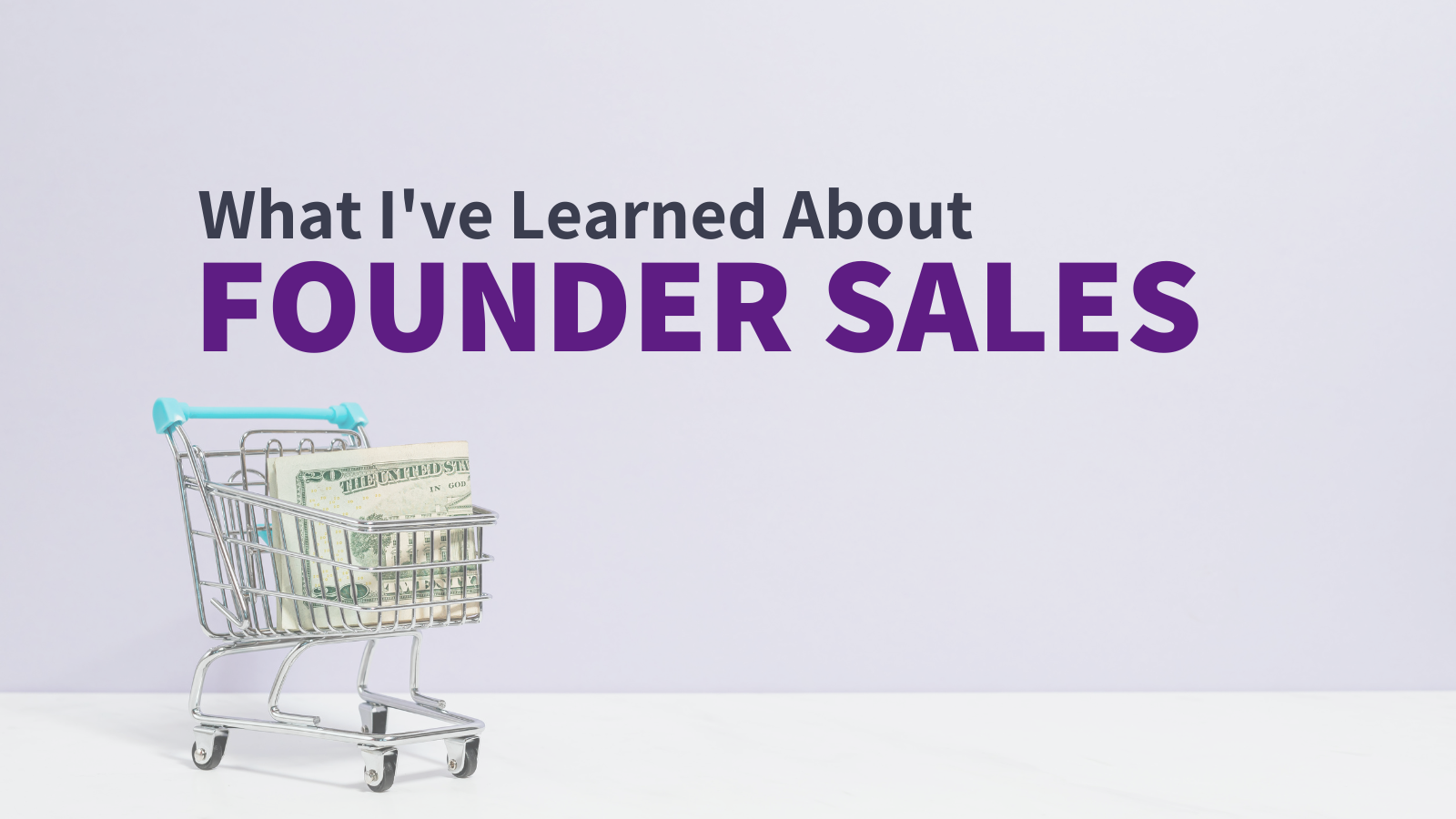15 Things I've Learned About Founder Sales

One of the first roles founders take on is that of sales leader. In fact, I’ve never seen a sales-driven startup get to over $1mm in revenue without a founder taking on the sales role.
When I started Draft.dev, I knew I’d have to take all the client calls for a while, but being from an engineering background, it was a little intimidating. I surprised myself though, and grew to really like sales. I closed over $3mm in sales the first two years, and while I only do a portion of our sales calls today, it’s still the part of the business I’m most involved in.
Someone recently asked me about making this transition from engineer to salesperson and founder-led sales, so I thought I’d share my high-level notes with you here:
Founder-Led Sales Strategy
- Inbound leads are 100x easier to convert than outbound leads. So, any efforts you can make that attract inbound inquiries (personal branding, blogging, vlogging, podcasting) will be significantly more fruitful in the long-run than outbound activities. They’re just slower to get started with unless you already had a following to begin with.
- Market demand trumps sales skills. In a hot market, even the worst salesperson will close deals. If there isn’t market demand for your product/service, you, as a founder, must note this and pivot accordingly.
- Early-stage sales calls should be treated more like customer research calls. Focus on understanding what your target market needs, rather than forcing your solution.
Basic Sales Tactics
- Build rapport. Avoid jumping straight into business. Take the time to find some common interest or shared experience with your prospect. LinkedIn is an excellent resource for researching prospects and facilitating the rapport-building process.
- Focus on the client. Dedicate at least half of your time in each call to understanding the client and their needs. Too many salespeople launch into their pitch without genuinely understanding what the prospect is seeking.
- Educate, don’t oversell. Instead of focusing on the merits of your solution, your goal should be to educate your prospects. Demonstrate how other clients are leveraging your product/services to give them a practical idea of how it could work for them.
- Showcase your process. If you don’t have a lot of good collateral, like testimonials or case studies, focus on your process. Detailing how your service works to your prospects can significantly build credibility.
- Follow up and stay in touch. One of the biggest mistakes founders make in sales is to follow up only once, then leave the next move to the client. Be a bit relentless with your follow-ups. You don’t want to annoy the client, but you do want a definitive answer, be it yes or no.
- Reinterpret silence and indecisiveness. If a prospect ignores four of your emails, interpret it as a ‘no’ - for the time being. Don’t lose heart; plan to reach out again in 2 to 3 months. Similarly, if they say ‘maybe’ four times in a row, treat it as a ‘no’ for now, but revisit them in a few months.
- Stay in touch with lost customers. Don’t lose touch with customers who have left. We get tons of rebound clients who realize how hard our services are to replicate after they leave and try to do it in-house.
Slightly More Advanced Sales Tips
- Figure out if your prospect actually has budget and authority. If not, find out who does. Ask if there is already a budget set aside, if it’s a new expense, and where the funding is coming from. These questions may feel uncomfortable at first, but they’re critical to determining how likely a sale really is.
- Avoid the ‘spray and pray’ method of sales outreach. You need a trigger for your outreach, such as a new hire, a new round of funding, or expressed interest in one of your lead magnets.
- Empower your prospects with the tools to make the sale internally. High-dollar sales often involve several stakeholders, and your initial contact is likely going to be someone lower in the organizational hierarchy. You have to give them collateral to make the sale to their boss or find a way to get their boss on a call.
- Be genuinely helpful. If your solution doesn’t align with the client’s need, refer them to people who can help them. This approach builds trust, turning the client into an advocate for you when they encounter someone who needs your solution.
- Selling to other founders is a double-edged sword. While it might seem easy because you can build trust quickly, it’s difficult to keep them as customers. Founders tend to be picky, price sensitive, and to believe they can execute everything in-house better. We now disqualify founders for our full-service packages and instead push them to one of our lighter-touch offerings.
Want to learn more? Here’s a breakdown of how we found our first 30 clients at Draft.dev.
